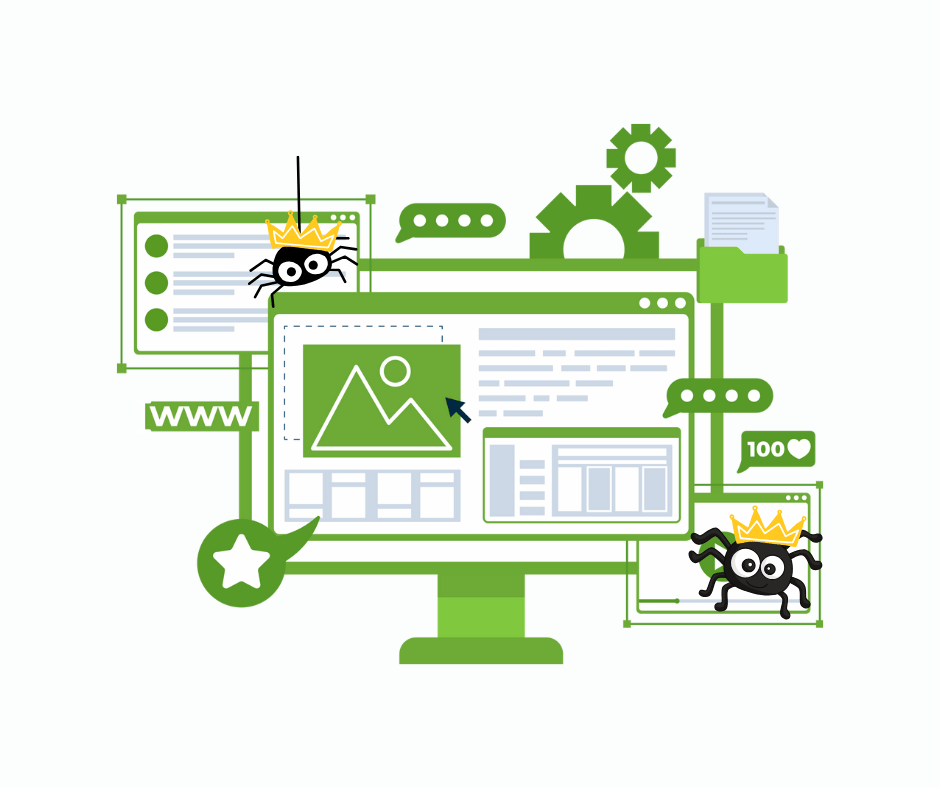
Intro post:
Ever wonder how search engines discover your website? It all begins with a process called crawling—an important behind-the-scenes mechanism where bots, often referred to as spiders, visit your site to gather valuable information. Imagine these spiders weaving a web of connections across the internet! Whether you’re new to SEO or looking to boost your site’s visibility, understanding crawling is crucial for optimizing your website.
In this guide, we’ll break down everything from the basics of crawling to advanced tips on ensuring your site is easy for bots to explore. Let’s dive in and uncover the hidden world of crawling!
- What is Website Crawling? Understanding the Basics
- How Search Engine Crawlers Work: The Technical SEO Process
- Key Factors That Influence How Often Your Website Gets Crawled
- Crawling vs. Indexing: What’s the Difference?
- Common Crawling Issues and How to Fix Them
- The Future of Crawling: What to Expect in 2024
What is Website Crawling? Understanding the Basics
At its core, crawling is the process by which search engines like Google discover new pages and content on your website. Bots, also known as spiders or crawlers, systematically browse websites to understand their structure and content.
Definition of Crawling:
Crawling is the first step in the SEO process, where bots collect data to help search engines understand the purpose of each page. Think of it as bots ‘reading’ your website.
How Bots (Spiders) Work:
These bots follow links from one page to another, much like how you navigate through the internet. Their goal is to map the web and identify which pages should appear in search results.
Crawling vs. Indexing:
Crawling is not the same as indexing. After crawling a page, search engines evaluate whether it’s valuable enough to be stored in their index—the database of web pages that can appear in search results. If a page isn’t indexed, it won’t show up, no matter how well it’s optimized.
Importance of Crawling in SEO:
If your site isn’t crawled, it won’t get indexed—and if it’s not indexed, it won’t rank in search engines. Crawling is the foundational step toward SEO visibility.
How Search Engine Crawlers Work: The Technical SEO Process
Now that you know what crawling is, let’s dive into the technical side of how bots crawl websites.
How Bots Find New Pages:
Search engines rely on links to find new content. Internal links within your site, as well as external links pointing to it, guide bots to your content. A solid internal linking structure is key to helping bots navigate easily.
Sitemaps and Internal Linking:
Submitting a sitemap to Google is a great way to ensure that crawlers find all your important pages. A sitemap acts like a map for these bots, pointing them to essential content on your site.
Crawl Frequency:
How often bots crawl your site depends on factors like domain authority, content freshness, and site structure. High-authority websites with regularly updated content are crawled more frequently. You can track your site’s crawl stats using Google Search Console.
Crawling, Indexing, and Ranking:
These are three distinct steps in SEO. Crawling helps discover content, indexing stores it in the search engine’s database, and ranking determines where your page will appear in search results.
Key Factors That Influence How Often Your Website Gets Crawled
Not all websites are crawled equally, and several factors can affect how often bots visit your site.
Domain Authority:
High-authority websites are crawled more frequently. Factors like backlinks, content quality, and the age of your domain all influence authority. You can read more about domain authority here.
Content Freshness:
Updating your content regularly signals to search engines that your site is active and worth visiting more often.
Website Structure:
A well-organized site with a clear internal linking strategy helps bots navigate and encourages more frequent crawling.
Duplicate Content:
Having duplicate content can confuse crawlers, making them less efficient. Implementing canonical tags helps you avoid this issue.
Crawling vs. Indexing: What’s the Difference?
It’s common to mix up crawling and indexing, but these are two separate steps in the SEO process.
Crawling:
Crawling refers to the process of discovering new web pages by following links, whether they are internal or external.
Indexing:
Once a page is crawled, search engines decide whether or not to index it, meaning they determine if it should appear in search results. Pages that are low in quality or duplicated may not be indexed.
Why Some Pages Aren’t Indexed:
Pages with noindex tags, low-quality content, or pages blocked by robots.txt might not be indexed. It’s important to monitor these factors to ensure your site is being indexed properly.
How to Optimize Your Website for Crawling in 2024
As SEO evolves, optimizing your site for crawling has become more sophisticated, but the core principles remain the same. Here’s how to get your site crawl-ready for 2024:
Robots.txt:
Use the robots.txt file to guide bots away from pages that don’t need to be crawled, such as login pages or admin sections.
Sitemap Submission:
Submitting an updated sitemap through Google Search Console helps search engines get a complete view of your site’s structure.
Avoiding Crawl Budget Wastage:
Sites with hundreds of unnecessary pages waste crawl budget. Canonical tags and regular content pruning ensure that bots only crawl what’s necessary.
Fast Page Load Times:
Fast loading pages are a must. A slow site can deter crawlers. Tools like Google PageSpeed Insights help identify areas for improvement.
Mobile Optimization:
With mobile-first indexing, optimizing your mobile site is critical. A responsive, fast-loading mobile version will improve crawlability and ranking.
Common Crawling Issues and How to Fix Them
Even well-maintained sites encounter crawling problems. Here are some common issues and how to solve them:
Crawl Errors in Google Search Console:
Keep an eye on your Google Search Console for crawl errors. Fixing these, whether they are server-related or broken links, can restore efficient crawling.
Blocked Resources in Robots.txt:
Make sure critical resources, like CSS and JavaScript files, are not accidentally blocked in your robots.txt file, as this can affect how your site is rendered and crawled.
Noindex Tags:
Double-check that important pages aren’t accidentally marked with a noindex tag, which could remove them from the index.
Crawl Traps:
Crawl traps occur when bots get stuck in an infinite loop. Avoid this by reviewing pagination and session IDs to ensure bots can efficiently navigate your site.
The Future of Crawling: What to Expect in 2024
The landscape of crawling is changing rapidly, with advancements in technology affecting how bots navigate the web.
AI and Machine Learning:
As AI improves, bots are becoming smarter and more efficient, interpreting content like humans do. Expect this to continue evolving in 2024.
Mobile-First Indexing:
As mobile-first indexing becomes the norm, it’s more important than ever to optimize your mobile site for crawling and indexing.
Structured Data:
Using structured data like Schema.org helps bots better understand your content, improving both crawlability and search engine ranking.
Frequently Asked Questions (FAQs)
Conclusion
Crawling is the foundation of SEO. If your site isn’t optimized for it, you’re missing out on valuable search engine visibility. By following the strategies in this guide, from improving your site’s structure to monitoring crawl errors, you can ensure your website is ready for crawling in 2024 and beyond. Ready to take the next step? Start optimizing your site for crawlability today and stay ahead of the curve!
DomainDotin is a leading Digital Marketing Agency in Calicut, Kerala, and a top Digital Marketing Company in Kochi. We specialize in delivering comprehensive digital marketing solutions to help your business thrive in the competitive online landscape. Explore our wide range of services to discover how we can support your growth and success.






5 Comments
orexis
November 16, 2024Thank you for informative content
luubet login
January 27, 2025You made some really good points there. I looked on the web to learn more
about the issue and found most individuals will go along with your views on this
web site.
luubet
January 28, 2025Hello There. I found your blog using msn. This is a very well written article.
I will be sure to bookmark it and come back to read more of your useful
information. Thanks for the post. I’ll certainly comeback.
luubet login
January 28, 2025Great blog you’ve got here.. It’s difficult to find
high-quality writing like yours these days. I truly appreciate individuals like
you! Take care!!
Keeley Burrow
February 1, 2025Normally I do not learn article on blogs, however I would like to say that this write-up very pressured me to take a look at and do it! Your writing taste has been amazed me. Thank you, very nice post.